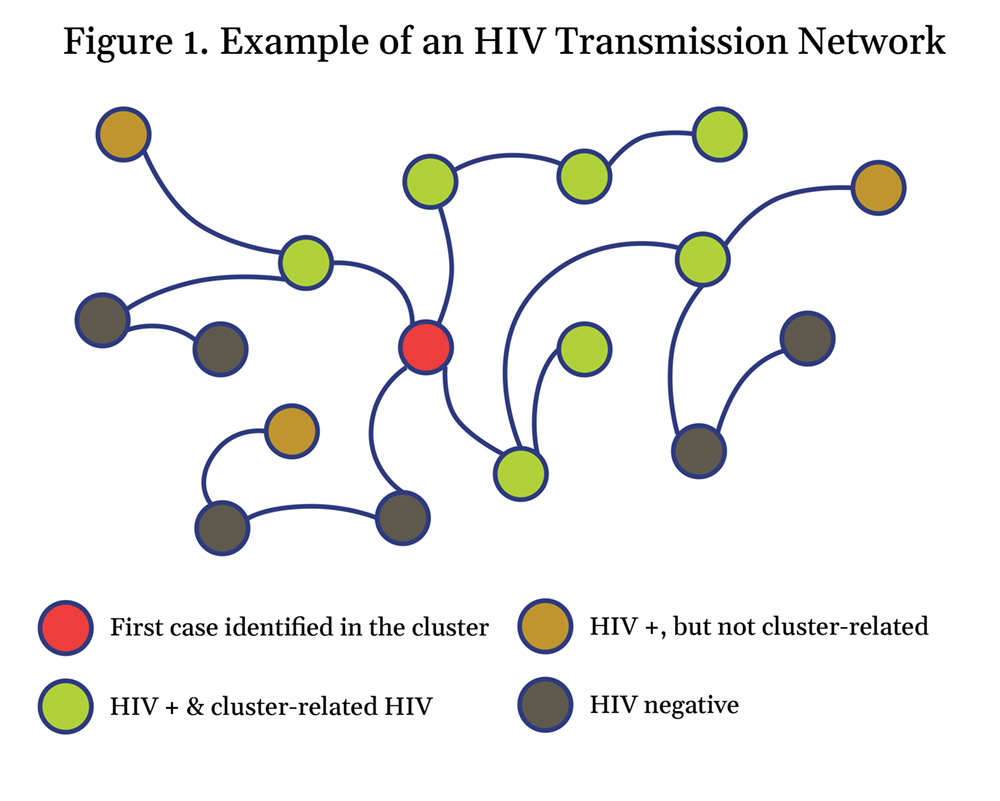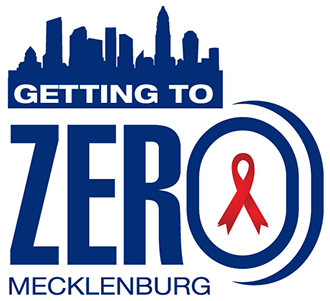Overview of HIV Respond Strategies
This section provides an overview of responses to HIV clusters and outbreaks of HIV infection. Real data are not included in this section, to ensure confidentiality of individuals' health information.
The Respond Pillar
The Respond pillar is a key part of the Ending the HIV Epidemic (EHE) initiative. It provides a framework for early identification of HIV outbreaks and rapid implementation of public health measures to stop transmission of HIV. Outbreaks sometimes happen within networks of people who are socially connected to each other (social networks). Many Respond activities depend on interrupting HIV spread within these networks.
- Clusters: Multiple instances of new HIV infections linked by time, geography, and/or genetic analysis of the HIV virus.
- Outbreaks: Occurrence of multiple new HIV infections that exceed expected numbers based on prior experience. Often used synonymously with “cluster.”
Rapid response to outbreaks of HIV infections is important. The more quickly people with HIV (PWH) get into HIV care, the sooner virus levels will be suppressed. This lowers the risks of HIV infection for the individual and interrupts transmission to others. The Respond Pillar applies the following principles with the goal of interrupting outbreaks of HIV.
- Identify and Link: Rapidly identify PWH who are untreated HIV and connect them to HIV care.
- Minimize Impact: Early treatment decreases virus levels and decreases immune system damage.
- Prevention: PWH who are in care are less likely to transmit HIV. Suppressing virus levels stops virus transmission to others (U=U). Contacts of PWH are tested and supported.
HIV Clusters and Networks
Connectedness among people (also known as Social Networks) is important for HIV transmission.
- People in networks often have similar attitudes and behaviors, including HIV transmission risk behaviors.
- Social contact brings people together, increasing the opportunity for HIV transmission.
- Studies have shown the effect of social networks on HIV transmission and outbreaks within the network (Fig.1).
- HIV transmission within networks may result in clusters of people with new HIV infections.
- Individuals with new, untreated HIV often are sources of new infections, because of:
- Lack of awareness of their HIV status
- Lack of awareness of HIV infection prevention methods
- High levels of virus in blood and body fluids
Mecklenburg County works with the North Carolina Department of Public Health (NC DPH), using the principles of network assessment to address HIV clusters.

HIV Transmission Network
This type of figure is often used to demonstrate connectedness among people in “social networks.” It is used to help understand the potential for HIV transmission among people in a network. It facilitates identification clusters (groups) of people who are at risk of HIV infection.
Cluster Response Plan (also know as Cluster Detection and Response - CDR)
Cluster detection and response is an important part of Ending the HIV Epidemic (EHE) strategy. The Cluster Response Plan is intended to interrupt chains of HIV transmission, prevent new HIV infections, and identify where additional resources may be needed. A number of HIV clusters have been identified in North Carolina, including Mecklenburg County.
The Cluster Response Team, comprised of MCPH experts, regularly reviews information on newly diagnosed cases. The Team collaborates with North Carolina Department of Public Health to respond to clusters as a high priority. These include time-space cluster detection and molecular epidemiology methods.
Pillar 4 - RESPOND: EHE Goals (by 2025):
Goal 1: Increase capacity to identify and investigate active HIV transmission clusters and respond to HIV outbreaks.
Goal 2: By year 5 MCPH will develop a fully functioning HIV Rapid Response Surveillance System and Dashboard.
Goal 3: By end of 2021 develop a local Mecklenburg County HIV/STI outbreak response plan.
Get Connected
Learn more about HIV/STD Testing Options;
or call 704-432-8378.
Free HIV/STD Testing Locations in Mecklenburg County.
Request HIV testing for an event.
Complete a confidential self-referral form
Health Statistic Data Request Form.
To join the Getting to Zero community group, email g2zmeck@mecknc.gov.
Find a Ryan White Provider.
Learn more about PrEP in Mecklenburg County.
Find a PrEP Provider.
Looking for another resource? Click here.
What is CHAMPS?
CHAMPS is the Community HIV/AIDS Monitoring and Prevention System dashboard for Mecklenburg County, North Carolina. There are two main purposes for the CHAMPS dashboard. First is to make data accessible to the public. Second is to monitor progress toward the four goals in the Getting to Zero Ending the Epidemic plan. Those four goals are to diagnose, treat, prevent, and respond to HIV locally. In addition, the CHAMPS dashboard monitors trends in new HIV diagnoses and the number of people living with HIV in our community.





